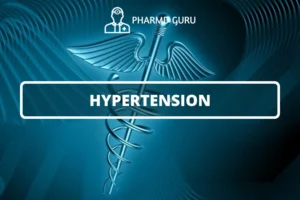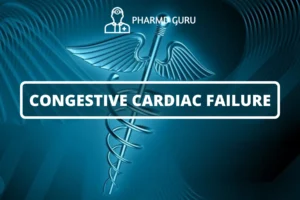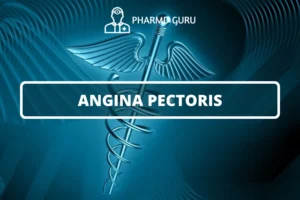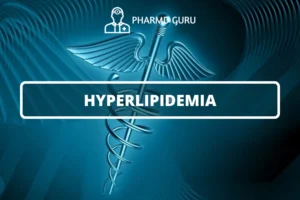Myocardial infarction, commonly known as a heart attack, is a life-threatening condition that occurs when there is a sudden blockage of blood flow to the heart muscle. In this article, we will explore the etiopathogenesis (the underlying causes) of myocardial infarction and delve into the pharmacotherapy options available for its management.
SCROLL DOWN TO THE BOTTOM OF THIS PAGE FOR ACTUAL NOTES.
Table of Contents
- Introduction: Understanding Myocardial Infarction
- Etiopathogenesis of Myocardial Infarction
- Risk Factors
- Pathophysiology of Myocardial Infarction
- Clinical Presentation and Diagnosis
- Emergency Management
- Pharmacotherapy for Myocardial Infarction
- Reperfusion Therapy
- Antiplatelet Agents
- Beta-Blockers
- ACE Inhibitors and ARBs
- Statins
- Secondary Prevention and Long-Term Management
- Lifestyle Modifications
- Cardiac Rehabilitation
- Treatment Guidelines and Recommendations
1. Introduction: Understanding Myocardial Infarction
Myocardial infarction occurs when there is a sudden disruption in the blood supply to a part of the heart muscle, leading to tissue damage. It is typically caused by the formation of a blood clot within a coronary artery, resulting in reduced or completely blocked blood flow. The lack of oxygen and nutrients can lead to irreversible damage to the affected area of the heart.
2. Etiopathogenesis of Myocardial Infarction
The development of myocardial infarction is multifactorial and often associated with underlying coronary artery disease (CAD). The primary etiopathogenesis of myocardial infarction includes:
- Atherosclerosis: The buildup of fatty deposits (plaques) in the coronary arteries, leading to narrowing and blockage.
- Thrombosis: Formation of a blood clot (thrombus) on the surface of a ruptured or eroded plaque, causing further blockage of the artery.
Other factors that contribute to the etiopathogenesis of myocardial infarction include inflammation, endothelial dysfunction, and platelet activation.
3. Risk Factors
Several risk factors increase the likelihood of developing myocardial infarction. These include:
- Age: The risk increases with age, particularly in individuals over 45 for men and 55 for women.
- Gender: Men are generally at a higher risk compared to premenopausal women. However, the risk equalizes in postmenopausal women.
- Family history: Having a close relative with a history of myocardial infarction increases the risk.
- Smoking: Tobacco smoke damages the blood vessels and increases the formation of plaques.
- Hypertension: High blood pressure puts extra strain on the heart and promotes the development of atherosclerosis.
- High cholesterol: Elevated levels of LDL cholesterol contribute to plaque formation.
- Diabetes: Diabetes mellitus increases the risk of cardiovascular diseases, including myocardial infarction.
- Obesity: Excessive body weight puts additional stress on the heart and is associated with an increased risk.
- Sedentary lifestyle: Lack of physical activity contributes to the development of risk factors like obesity, hypertension, and diabetes.
Identifying and addressing these risk factors is crucial for preventing myocardial infarction.
4. Pathophysiology of Myocardial Infarction
The pathophysiology of myocardial infarction involves the following steps:
- Atherosclerotic plaque formation: Accumulation of cholesterol and inflammatory cells in the arterial walls leads to the development of plaques.
- Plaque rupture or erosion: Plaques can become unstable and rupture, exposing the underlying tissue to the blood flow.
- Thrombus formation: When a plaque ruptures or erodes, a blood clot may form at the site of injury.
- Coronary artery occlusion: The blood clot can partially or completely block the coronary artery, reducing or stopping blood flow to the heart muscle.
- Ischemia and necrosis: The lack of oxygen and nutrients results in ischemia (insufficient blood supply) and subsequent necrosis (cell death) of the affected area of the heart.
5. Clinical Presentation and Diagnosis
The clinical presentation of myocardial infarction may vary, but the typical symptoms include:
- Chest pain or discomfort: Often described as pressure, squeezing, or heaviness in the chest.
- Radiating pain: The pain may extend to the left arm, neck, jaw, back, or shoulder.
- Shortness of breath: Difficulty breathing or feeling breathless.
- Nausea, vomiting, or lightheadedness: Additional symptoms that may accompany chest pain.
Prompt diagnosis is crucial for timely management. Diagnostic methods used to confirm myocardial infarction include:
- Electrocardiogram (ECG): Detects abnormal electrical activity in the heart.
- Cardiac enzymes: Blood tests that measure the levels of enzymes released during heart muscle damage, such as troponin.
6. Emergency Management
Once myocardial infarction is suspected, immediate medical attention is crucial. Emergency management may involve:
- Administering aspirin: Helps prevent further clotting and reduce the extent of damage.
- Oxygen therapy: Supplemental oxygen is provided to ensure adequate oxygenation.
- Nitroglycerin: Used to relieve chest pain and improve blood flow.
- Morphine: Given to alleviate severe pain and reduce anxiety.
- Reperfusion therapy: Emergency procedures such as angioplasty or thrombolytic therapy to restore blood flow to the heart.
7. Pharmacotherapy for Myocardial Infarction
Pharmacotherapy plays a vital role in the treatment and management of myocardial infarction. Medications commonly used include:
8. Reperfusion Therapy
Reperfusion therapy is aimed at restoring blood flow to the blocked coronary artery as quickly as possible. This can be achieved through two main approaches:
- Percutaneous coronary intervention (PCI): A catheter is inserted into the blocked artery to mechanically remove the clot and restore blood flow. It may be accompanied by stent placement to keep the artery open.
- Thrombolytic therapy: Medications, known as thrombolytics or clot-busters, are administered to dissolve the blood clot and restore blood flow. This approach is typically used when immediate PCI is not available.
9. Antiplatelet Agents
Antiplatelet agents are used to prevent further clot formation and reduce the risk of recurrent myocardial infarction. These medications include:
- Aspirin: A daily low-dose aspirin regimen is often recommended to inhibit platelet aggregation.
- P2Y12 inhibitors: Medications like clopidogrel, ticagrelor, or prasugrel are prescribed to further inhibit platelet activity and reduce the risk of clot formation.
10. Beta-Blockers
Beta-blockers are commonly prescribed for long-term management following myocardial infarction. These medications help reduce the heart’s workload, decrease blood pressure, and prevent arrhythmias. Beta-blockers have been shown to improve survival rates and prevent future cardiac events.
11. ACE Inhibitors and ARBs
Angiotensin-converting enzyme (ACE) inhibitors and angiotensin receptor blockers (ARBs) are medications used to manage blood pressure and reduce the strain on the heart. They have protective effects on the heart muscle and can help prevent complications after myocardial infarction.
12. Statins
Statins are lipid-lowering medications that help reduce cholesterol levels. They are widely prescribed to individuals with myocardial infarction to prevent the progression of atherosclerosis and lower the risk of future cardiovascular events.
13. Secondary Prevention and Long-Term Management
Following myocardial infarction, long-term management is essential to prevent recurrent events. This involves:
- Lifestyle Modifications: Adopting a heart-healthy diet, engaging in regular physical activity, quitting smoking, managing stress, and maintaining a healthy weight.
- Medication Adherence: Taking prescribed medications as directed by healthcare providers.
- Regular Follow-Up: Routine check-ups and monitoring of risk factors, such as blood pressure, cholesterol levels, and blood sugar levels.
14. Lifestyle Modifications
Lifestyle modifications play a crucial role in preventing myocardial infarction and managing the underlying risk factors. These include:
- Heart-Healthy Diet: Consuming a balanced diet rich in fruits, vegetables, whole grains, lean proteins, and healthy fats while limiting saturated and trans fats, cholesterol, sodium, and added sugars.
- Regular Exercise: Engaging in moderate-intensity aerobic exercise for at least 150 minutes per week, along with strength training exercises.
- Smoking Cessation: Quitting smoking and avoiding exposure to secondhand smoke.
- Stress Management: Adopting stress-reducing techniques like meditation, deep breathing exercises, or engaging in hobbies and activities that promote relaxation.
15. Cardiac Rehabilitation
Cardiac rehabilitation programs are structured programs that aim to improve cardiovascular health and assist in the recovery and adjustment process following myocardial infarction. These programs typically involve exercise training, education, counseling, and support to help individuals regain physical strength, improve lifestyle habits, and reduce the risk of future events.
16. Treatment Guidelines and Recommendations
Various professional organizations, such as the American College of Cardiology (ACC) and the European Society of Cardiology (ESC), have developed guidelines and recommendations for the treatment and management of myocardial infarction. These guidelines provide evidence-based recommendations on diagnostic criteria, treatment options, and long-term management strategies.
ACTUAL NOTES:




